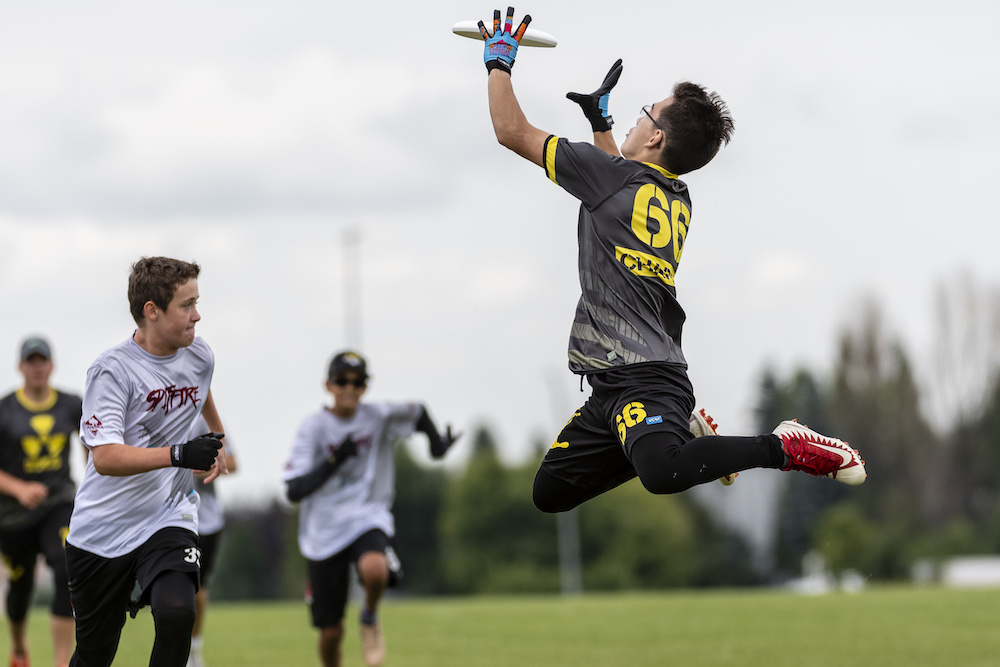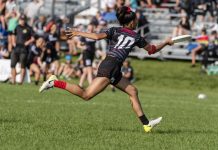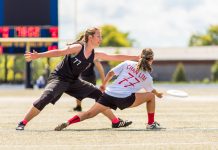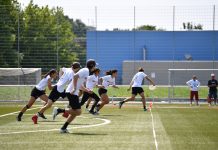Ultimate Canada Magazine – March 27, 2020.
Written by: Colin Young, HSP Assistant Coach
Edited by: Mike Haddock, HSP Head Coach
The following is the fourth in a 4-part blog series about designing a High Performance Program for Ultimate Athletes. In this series, we will explore critical foundational exercises within Strength, Plyometrics, Agility, and Stability/Accessories, and provide some insight on our programming. Please note, there are risks associated with any exercise and should be considered carefully for any athletic program. Consult individually with a professional as needed.
What Is Agility and Why Should We Develop It?
In the simplest sense, agility is how well you change direction, but when we dig into the science and physics further, the ability to change direction is dictated by how well an athlete reacts, decelerates, and accelerates again in a coordinated manner. A failure in any of those components or skills can result in loss of performance.
For experienced athletes on the field, they recognize and anticipate “signals” on the field, so their reactions and timing can seem far faster than the less experienced. However, while reaction plays a role, any athlete will benefit from learning the skills to effectively decelerate and reaccelerate. After spending enough time developing quality agility patterns, these athletes will be able to instinctively get into the most optimal position to receive a pass from a teammate, or keep a close mark on their check.
However, one more critical aspect to consider with agility training is that for the vast majority of competitive scenarios, agility patterns involve sideways movements or rotation. The ability to move effectively and safely in a side to side manner will reduce the risk of injury and increase your change of direction speed on the field. If you haven’t already, make sure to implement agility training into your routine!
Key Offseason Agility Exercises
The two exercises below will help you to build the foundation needed, so that you can eventually start implementing more complex, forceful, and multidirectional agility work into your programming.
Movement #1 – Lateral Jumps
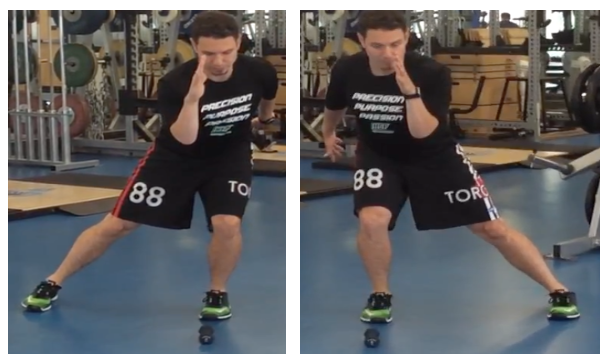
If you have already developed competency in lateral lunges (from our accessory article), give this exercise a try. Having a consistent lateral lunge skill beforehand is important, as it teaches an athlete to properly position and load the hips in space. Lateral jumps are a precursor exercise to shuffling drills and learning these will teach the athlete to instinctively land with proper leg angles, good hip positioning, and loading. In the accompanying pictures, an athlete will set up on the left picture position. From there, they will lightly jump into the air, and “switch” the legs to land in the right picture position. Notice the dumbbell/marker on the ground. When first learning this exercise, having an object in front of you as a visual marker, or performing the exercise on a line can help you achieve consistent positions.
Movement #2 – Shuffle to Lateral Base Stance
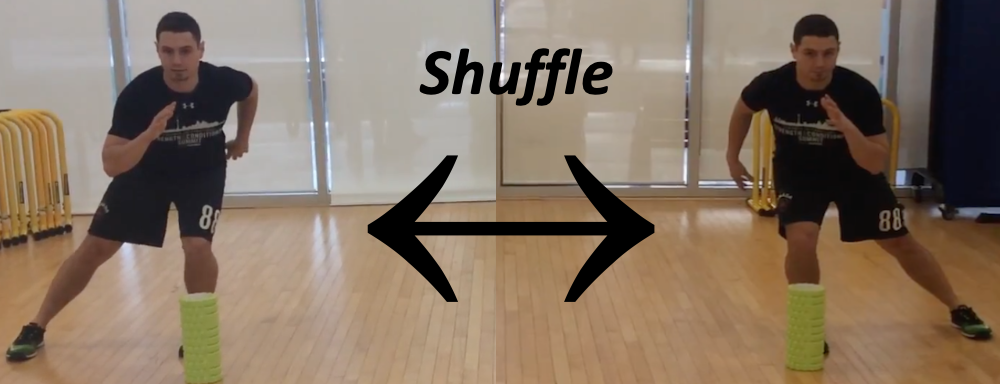
On the field, athletes decelerate and accelerate within a short period of time. The goal of this exercise is to shuffle and “land” in the lateral base stance position (decelerating quickly and efficiently). Note the two markers (green foam rollers) are used as guides for where to stop. The key progression and challenge difference between movement #1 and #2 is how an athlete will have shuffling momentum going into the landing position and must work far harder in the lower body muscles to stop and hold the position.
Just like any other movement, practice is needed to become better. Keep practicing and eventually, the proper positioning for these movements will become automatic both in training and on the field.
Three Technical Flaws To Look Out For
These exercises are not easy to learn, as most athletes have not trained using “side to side” movements very often. There are a number of errors and technical challenges to be aware of, and we have outlined the three most common issues with the lateral jumps and shuffles above.
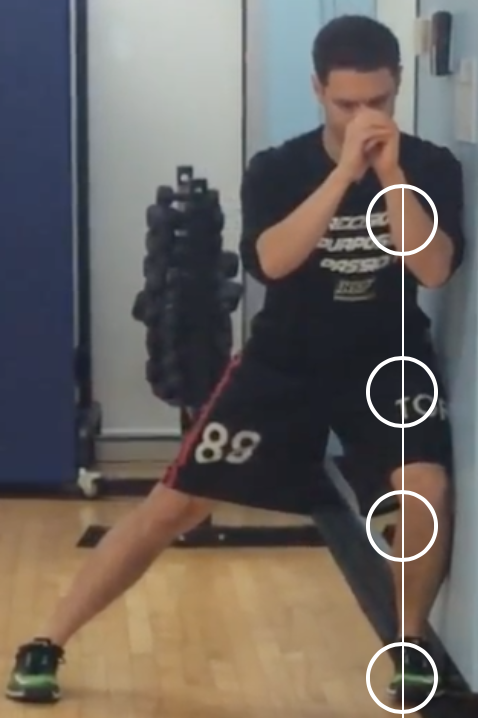
1. Misalignment of the ankle, knee, hips, and shoulder.
The ankle, knee, hip, and shoulder should be stacked when landing. Landing with either the ankle, knee, shoulder, or hip misaligned (or not stacked vertically) can increase the risk of injury and change how the load is displaced. This picture shows how a wall can be used to help learn proper positioning
2. Incorrect arm action.
The movement is incorrect when the same arm and same leg are in the front. The correct arm action occurs when the opposite leg and arm are forward, just like when running.
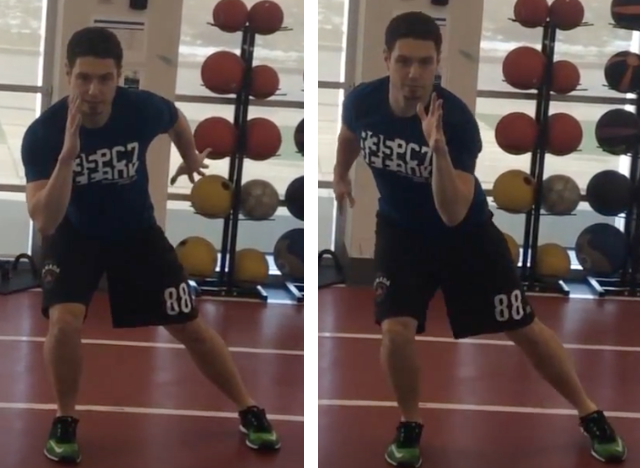
3. Making the movement knee dominant, rather than hip dominant.
Make sure to incorporate some hinging to load the hips, rather than just having only a knee bend.
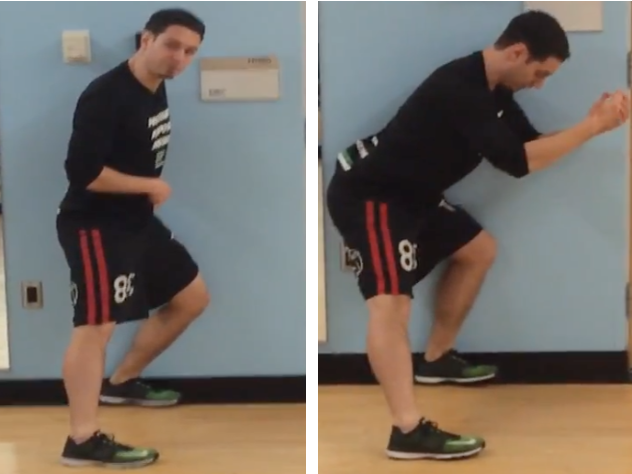
Right Picture: Correct. Pushing the bum backward.
In the initial learning stages, it may require a lot of thinking to avoid these flaws and maintain proper positioning; however, as you spend more time practicing, you will become more comfortable with these movements. At a certain point in your training, you will be capable of deliberately performing these movements with the intent of moving fast, reacting much quicker, and spending less time hesitating. After mastering these two foundational agility exercises, make sure to progress into more complex exercises and you will notice the changes in how you move on the field.
Mike Haddock is the owner of Haddock Sport Performance (HSP), and has been the head Strength & Conditioning Coach for Ultimate Canada. If you would like to learn more about HSP tips, technique, and work; follow Mike Haddock and Colin Young on Instagram!
